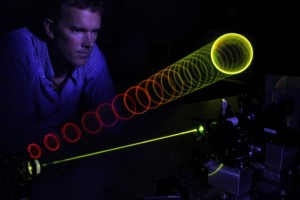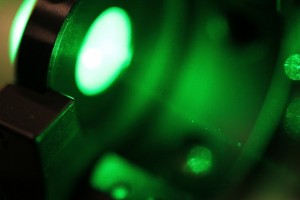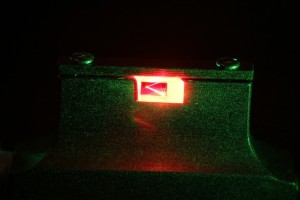Electro-Optics
The Electro-Optics option at SDSU provides students with a B.S. or M.S. degree in physics with an emphasis in Electro-Optics. The program has been in existence since the early 1960’s and has achieved national recognition at both the undergraduate and M.S. levels. Because students obtain a B.S. or M.S. degree in Physics, they have all of the math and physics courses that are normally associated with these degrees. Note that SDSU does not offer a Ph.D. degree and consequently our B.S. and M.S. students can be assured of receiving all of our attention.
Our main goal is to introduce students to several important topics that contain a lot of physics and are important in the discipline. Experimental topics include:
- Polarization studies and Electro-optic Light Modulators,
- Acousto-optic Light Modulators,
- Fiber optics,
- Laser Physics,
- Holography,
- Optical Image Processing and Optical Pattern Recognition,
- Fourier Transform Spectroscopy with a Michelson Interferometer,
- Erbium doped optical fiber amplifiers,
- Multilayer dielectric optical coatings or photonic crystals,
- Diffractive optics.
For more information, visit the Electro-Optics Program website or contact Professor Jeff Davis via email at jeffrey.davis@mail.sdsu.edu.
Ultrafast Lasers and Optics

Dr. Anderson built the first femtosecond laser system at SDSU, and over the last several years has used this system to study the limits on pulse shaping and measurement, nonlinear effects in matter, and generation of novel femtosecond beams using spatial light modulators. These areas of research have been at the forefront of optical science for the last decade.
The lab includes a Ti:Sapphire oscillator (capable of generating 10-100 fs pulses), a multipass amplifier, computers, electronics, assorted optics and mounts. At 200-300 mW output, the oscillator permits a range of experiments without amplification. There are two operational pulse shapers currently in the lab. The first is a temporal pulse shaper. It is a grating-based 4f system using a liquid crystal spatial light modulator (SLM) consisting of two 128 arrays sandwiched between polarizers (Cambridge Research SLM-256).
This device can shape both the amplitude and phase of our femtosecond pulses. The outgoing temporal structure can be conveniently monitored using a SPIDER pulse characterization apparatus. For information, contact Professor Matt Anderson.



